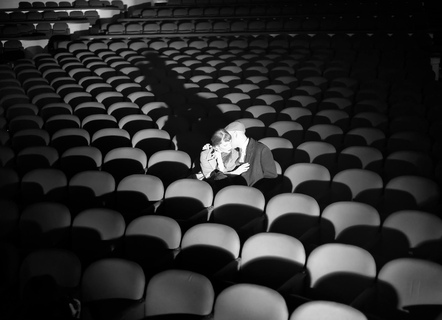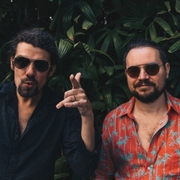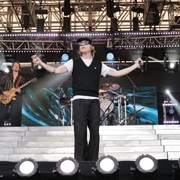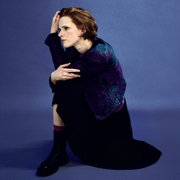New York, NY (Top40 Charts) Gramercy Theatre, a landmark venue in New York City, is renowned for its intimate atmosphere and eclectic lineup of performances. From indie bands to famous artists, the theatre hosts diverse events, drawing in music lovers from all over. While the audience enjoys the seamless production of a live concert, an intricate web of activities happens behind the scenes to make each event successful. For anyone looking to attend a show, checking the
Gramercy theatre schedule is the first step to experiencing a night of unforgettable music. This article delves into the backstage world of Gramercy Theatre, uncovering what it truly takes to host a concert at this iconic venue.
The Planning Phase
Any activity that takes place at Gramercy Theatre will first start with the most well-grounded preparation. This stage necessitates the concurrent involvement of various stakeholders, such as event coordinators, band managers, technical personnel responsible for lighting, and advertising teams. This process begins a few months ahead, involving the agent negotiating dates and terms. After the performance is confirmed, the event coordinators create a schedule for organizing the show.
The aspect of the planning phase that seems crucial is getting familiar with each artist's peculiarities. Performers from different backgrounds have specific requirements that are as varied as the kind of sound equipment they need for a distinctive stage setting.
The technical rider, an official document sent by the group itself, details these needs and the necessary specifications. Gramercy Theatre personnel are responsible for carefully following the details mentioned in the rider to ensure all requests can be fulfilled. These can be as simple as lighting setups and festival requirements, but they are crucial for the artist to feel at home and for their performance to be excellent.
Technical Preparations
After establishing the preliminary stage of the organization, the technical phase begins. The sound and lighting teams, the backbones of the theatre, are the starting representatives of this phase. Primarily, they examine technical setup equipment and run tests on it before the event to avoid misrules and disorders. The crucial technical part is the soundcheck, permitting the sound engineers to tailor the acoustics to different styles of music and different sizes of the audience, protecting the artist's style and characteristics of the place.
Lighting is another crucial factor in the concert world. The lighting operator contacts the band's production team to prepare lighting that will go well with their music and inspire the audience. This involves programming complex lighting sequences, checking and fixing any technical issues, and acquiring approval from the band to manipulate the characteristics of their music through the light drones.
The Day of the Concert
During the early hours of the concert day, the excitement begins at the theater, where everything turns into action. The people at the stage start to set up the stage with the equipment according to the instructions given by the technical rider. The first step is to set up the equipment, and the stage crew quickly takes care of it by putting the musical instruments in place, hanging the microphones, and leaving the speakers on the stands.
Every minute detail is double-checked so that everything is noticed. As the spectators start to take their seats and the doors open, the staff at the front joins to ensure the audience's satisfaction. The staff also handles the ticket scanning and guides the audience members to their seats, as well as assists in answering questions and addressing minor issues. By then, the security staff begins the operation in front of the house to keep the situation under control.
In the back of the stage environment is a combination of organizing emotion for the artists and doing their job by staff from Gramercy Theater. As for the performers and their squad, they gear up for the show, while staffers from the Gramercy Theatre offer their best help even before the band takes to the stage with their unique brand of craziness. Lastly, the stage manager is in charge of the show, talking with them about the artists' plans, and then the theater staff will do the jobs they have been assigned, taking the services of the staff.
Post-Concert Activities
After the last note is played, the crowd moves away from the scene, as the people working at the Gramercy Theatre shifts are far from finished. It necessitates the removal of the equipment and packing them inside the cases some distance away from the concert ends, noting that the stage crew adopts an efficient approach to remove it from the stage and make the venue ready for the other occasion.
Simultaneously, the concert hosts the artists while also generating revenue. The administrative staff examines the event differently, considering attendance numbers, reviews, and technical obstacles. These reports are vital for further planning since they help perfect and speed up the process of concert organization.
Conclusion
Giving a concert at Gramercy Theater involves a complicated, multilateral event requiring specific skills, devotion, and expertise. From the initial planning to the very last work after the concert, a series of clearly defined steps is needed for an excellent outcome for everyone involved. Then, it's the same hope to the audience on the other side of the stage, as they will emotionally journey along with you while watching the concert of New Gramercy Theater.
In conclusion, the effort of the victory of a live performance at Gramercy Theatre is the fruit of hard work by a professional team of dedicated persons who stay behind the curtains. The way they work guarantees that each concert is a blast and contributes to building the theatre's fame as a well-known live music venue in the New York City area.
























